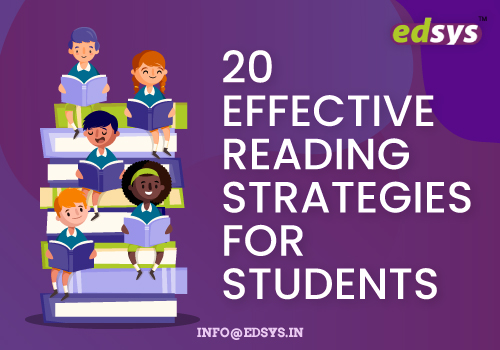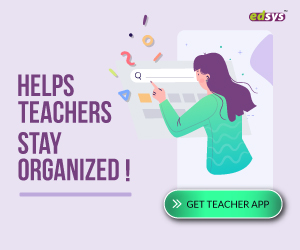Reading is an exercise for your mind. It is a way of turning a text into meaning and then understanding it to interact with it through a message. To make your reading more effective, you may make a sense of what you read. Often you unconsciously lose the meaning in between, which causes a sense within yourself to make use of effective reading strategies. Here are a few effective reading strategies for you:
Based on Critical Reading Strategies
Critical reading of a text means to read from your own perspective, apart from what the writer has painted it for you. So, this rational way of reading can be considered as the beginning of true learning and personal development. Here are a few effective critical reading strategies for you:
1. Previewing
It means to attain pre-knowledge about the text, before starting to read it, which may save you time. It may be done by researching:
- Who is the author?
- What is the author’s purpose?
- Who is the audience?
Get FREE Students Apps (Check it Now)
2. Contextualizing
Contextualizing or researching the text involves exploring the historical, cultural and biographical frame of references of the text.
From a wider perspective, it means that you should try to differentiate between your own understandings of the text with that of some other person’s, as an understanding of a text may vary from time to time and place to place.
3. Inquisition
It is all about questioning the content of the text to understand, comprehend and clarify what you are reading, which will help you to build interest with the text. This can be made easier by framing 3 sets of questions:
- Subject-Text(represents subject or text undergoing discussion)
- Personal reality(represents your own experience)
- External reality(represents the concepts of larger society)
4. Synopsizing
This is an effective reading strategy, which is also known by other names like outlining or summarizing. This method is to identify the central theme of the text and then to paraphrase it in your own words. The key to synopsizing is the ability to make out a difference between the main idea, supporting idea and the examples.
5. Co-relating with related reading
This is a mode of reading based on the factor of comparison, by examining the differences or similarities within the texts to figure it out in a better sense.
6. Assessing an argument
This involves testing the logicality along with the credibility and emotional impact of the text.
You can analyze an argument using these 4 steps:
- You should thoroughly go through the instructions and arguments
- Then spot out the assumptions and claims of the argument
- Now you should think of counter explanations and examples of the arguments.
- Finally, ask yourself about the changes that can be made.
Also Read: 21 Inspirational Movies Every Student Must Watch
7. Activating Prior-Knowledge
This is a method of reading a text with some pre-conceived notions in mind. This will let you get a better understanding of the text.
Academic Reading Strategies
Being a student, one of the biggest challenges you may face is to complete reading the academics. So if you know the different academic reading strategies, you will enjoy reading. Here are a few of the academic reading strategies:
8. Scanning
Scanning is a specific reading skill that does not focus on every nook and corner of the text.
You do scanning while reading a schedule about the screen timings of a movie or a cricket match or while going through the weather map in the newspaper.
To make the scanning process more helpful, you can use the following strategies:
- Find out the keyword from the question itself
- You should scan separately for each question
- When you re-locate the keyword, go through the surrounding texts too.
9. Skimming
This is a technique almost similar to that of scanning, but the aim is to collect the main points of the text from a wider perspective. It’s just like skimming milk, where after skimming, we skim the finest part of the milk. Likewise, when you skim a text, you will learn the main points in the text, thereby; you can save your time.
Good skimmers do not skim everything. You can do it wisely by slowing down your pace of reading at places like:
- Introductory and concluding paragraphs
- Topic sentences
- Unfamiliar words
10. Intensive Reading
When compared to the other two techniques, this is relatively slower and a time consuming one.
This involves sentence to sentence reading rather than word to word reading.
You should read every sentence in detail from the beginning to the end and thereby, analyze the complete meaning of the text.
If you put too much pressure on vocabulary, then it would be a burden rather than a blessing.
Based on Cognitive Reading Strategies
This is a mental procedure for achieving a goal. In simpler words, cognitive strategies for learning will help you in reading effectively by just thinking and then solving the problem. There are different methods of cognitive reading like:
11. Inferring
This is a way of extracting the meaning of the text by bringing together the things that are written or unwritten in the text along with your prior knowledge about the subject. You have to read between the lines and understand the secondary meaning of the text.
12. Monitoring or Clarifying
It is a reading comprehension strategy where the reader constantly enquires whether the text makes any sense to them and enforcing strategic methods to make the text easier. You can understand it better by using these few methods:
- Re-read the paragraph
- Search for unfamiliar words
- Reconstruct information into an image, concept or map
13. Visualizing and Organizing
It is a method that stimulates the readers to create a vague image in their mind, about the content they read. It’s like a person making movies or videos in their minds out of the prior knowledge, imagination and the content of the text. This will stimulate your imagination and enhance your involvement with the text and thus improve your mental imagery
14. Searching and Selecting
This is a way of searching sources of the text to choose the required piece of information to answer the questions, solve problems, and clear the wrong interpretations or to gather information.
15. Questioning
This is a mode of reading which is almost similar to that of the above-mentioned method-‘Inquisition’, which involves questioning. This will engage you with self-questioning, by which you will gain an answer with the help of your peers and teachers.
Some questions which will help you read effectively are:
- Why did that character behave so?
- What led to such an issue?
- What next?
Based on Fluency Reading Strategies
Whether you read it with hatred, stumbled words or without expression, your comprehension will be affected. Better fluency leads to better understanding. So some of the fluency reading strategies are discussed below:
16. Reading it aloud
This can be done with the help of a peer or a teacher, where, you should read it aloud, and your peer should correct the mistakes regarding your fluency in language and correctness in sentences.
This will be quite a good way to determine your initial level of reading.
Also Read: 13 Ways to Deal With Exam Stress
17. Choral Reading
This is a reading strategy that aims at the repetition of sentences. In this, you should copy what the teacher says, just as we did in smaller classes. This will sharpen your ability to decode words and increase vocabulary.
18. Partner Reading
This is a kind of peer learning where strong readers are paired with weaker ones so that the latter can learn from the former. This will allow you to share your strengths. This is also known as Peer-assisted learning.
19. Cloze Reading
This is a technique of effective reading where the instructor will read the passage aloud and will deliberately skip certain words from the passage, and further you will be asked to read the missing words together. This will improve your analytical as well as critical thinking ability.
20. SQ3R
Following an SQ3R is a well-known strategy for reading. It can be applied to a whole range of reading purposes as it is flexible and takes into account the need to change reading speeds.
SQ3R acronym stands for:
- Survey
- Question
- Read
- Recall
- Review
Reading is a skill that can be considered as a lifelong achievement. So by using wisely the effective reading strategies, you can improve your lifelong skill, which may often save your time.



